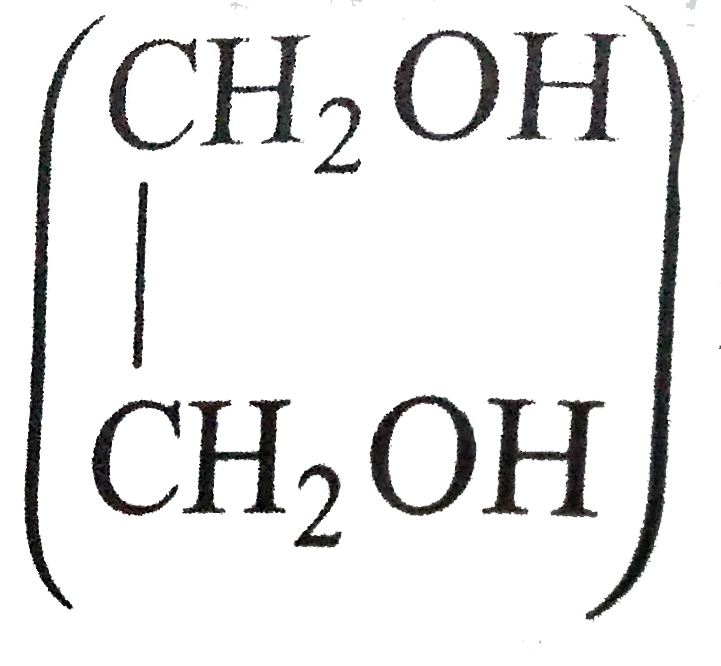Complete Solutions to ASSERTION-REASON of chapter ALCOHOLS, PHENOLS AND ETHERS of Class 12 book with complete answers and questions
| Class 12 | CHEMISTRY |
| Chapter | ALCOHOLS, PHENOLS AND ETHERS |
| OP TANDON | ASSERTION-REASON |
| Number Of Questions | 20 |
| Academic Year | 2023-24 |
Statement I Solubility of n-alcohol in water decreases with increase in molecular weight.
Statement II The relative proportion of the hydrocarbon part in alcohols increases with increasing molecular weight which permit enhanced hydrogen with water.
View Solution(A) Di-tert-butyl ether cannot be prepared by Williamson's ether synethesis.
(R ) tert-Butyl bromide on treatment with sodium tert-butoxide preferentially undergoes elimination to form isobutylene and tert-butyl alcohol
View Solution(A ) The boiling point of ethanol is much higher than that of diethyl ether.
(R ) In ethanol, the molecules are associated due to inter-molecular hydrogen bonding, whereas in diethyl ether it is not possible.
View Solution(A) The acidity of alcohols follows the order `1^(@) gt 2^(@) gt 3^(@)`.
(R ) The `+I` effect of alkyl groups `(3^(@) gt 2^(@) gt 1^(@))` favours the dissociation of `-O-H` group.
View Solution(A) Alcohols can be dried over anhydrous `CaCl_(2)`
(R ) Anhydrous `CaCl_(2)` absorbs moisture of aqueous ethyl alcohol.
View Solution(A) `CH_(3)OH` is a nuelophile
(R ) `CH_(3)OH` forms sodium methoxide on treatment with NaOH.
View Solution(a) `HIO_(4)` decomposes 1,2-glycols but not 1,3- or higher glycols.
(R ) Only 1,2-glycols form cyclic esters which subsequently undergo cleavage to form carbonyl compounds.
View Solution(A ) `3^(@)` Alcohols show turbidity within 5 minutes, when treated with Lucas reagent.
(R ) Conc. HCl and anhydrous `ZnCl_(2)` in `1:1` mixture is called Lucas reagent.
View Solution(A) Grignard reagent reacts with aldehydes and ketones to form alcohol.
(R ) Alcohols have acidic hydrogen.
View Solution(A)Glycerol does not react with HI.
(R ) 2-Iodopropane can be produce by treatment of glycerol with HI.
View Solution(A) Glycol
 reacts with HI to give ethylene.
reacts with HI to give ethylene.
(R ) Initially ethylene di-iodide is formed which being unstable loses a molecule of `I_(2)` and forms ethylee.
View Solution(A) `RCOCl,(RCO)_(2)O` and `RCOOR'` all react with Grignard reagent to form `3^(@)` alcohols.
(R ) RCOCl reacts with `R_(2)Cd` to form ketones but `(RCO)_(2)O` and `RCOOR'` do not react at all.
View SolutionAssertion : Ease of dehydraction of alcohols follows the order : Tertiary `gt` Secondary `gt` Primary.
Reason : Dehydration proceeds through the formation of oxonium ion.
View Solution(A ) Acidic character of alcohols follows the order `:`
Primary `gt` Secondary `gt` Tertiary
(R ) Acidic character of alcohols is due to the presence of polar O-H group.
View SolutionPhenol is more reactive than benzene towards electrophilic substitution reaction.
In case of Phenol, the intermediate carbocation is more resonance stabilised.
View SolutionAssertion: `p`-nitrophenol is a stronger acid than `o`-nitrophenol.
Reason: Intramolecular hydrogen bonding makes the `o`-isomer weaker than the `p-`isomer.
View Solution(A) o-Phenol sulphonic acid on heating at `100^(@)C` changes to p-phenol sulphonic acid.
(R ) Sulphonation of phenol is a reversible process.
View SolutionAssertion : Phenol and benzoic acid can be distinguished by `NaHCO_(3)`.
Reason : Benzoic acid is a stronger acid than phenol.
View Solution(A) Reimer-Tiemann reaction of phenol with `C Cl_(4)` in NaOH at 340K gives salicylic acid as the major product.
(R ) The reaction occurs through intermediate formation of dichlorocarbene.
View Solution(A) 4-Nitrophenol is more acidic than 2,4,6-trinitrophenol
(R ) Phenol is weaker acid than carbonic acid.
View Solution
ASSERTION-REASON questions and complete solutions for chapter ALCOHOLS, PHENOLS AND ETHERS of G.R. BATHLA & SONS CHEMISTRY (HINGLISH) of Class 12
All Exercises from OP TANDON Class 12 CHEMISTRY ALCOHOLS, PHENOLS AND ETHERS
- (C )ETHERS
- ASSERTION-REASON
- BRAI STORMING PROBLEMS
- ETHERS
- ETHERS Passage 6
- Ethers SET1:
- ILLUSTRATION OF OBJECTIVE QUESTINS
- LINKED COMPREHENSION Passage 1
- Matching Type
- MATRIX -MATCH
- OBJECTIVE QUESTIONS (LEVEL-A)
- OBJECTIVE QUESTIONS (LEVEL-B)
- passage 2
- Passage 3
- Passage 4
- Passage 5
- Passage 7
- PHENOLS
- PROBLEM
- PROBLEM FOR PRACTICE
- PROBLEMS BASED ON STRUCTURE AND PROPERTIES
- SET II
- SETII
- SINGLE INETER ANSWER TYPE QUESTIONS / ALCOHOLS AND PHENOLS
- Some SOLVED PROBLEMS